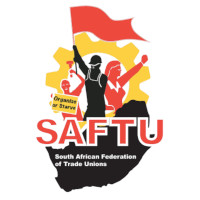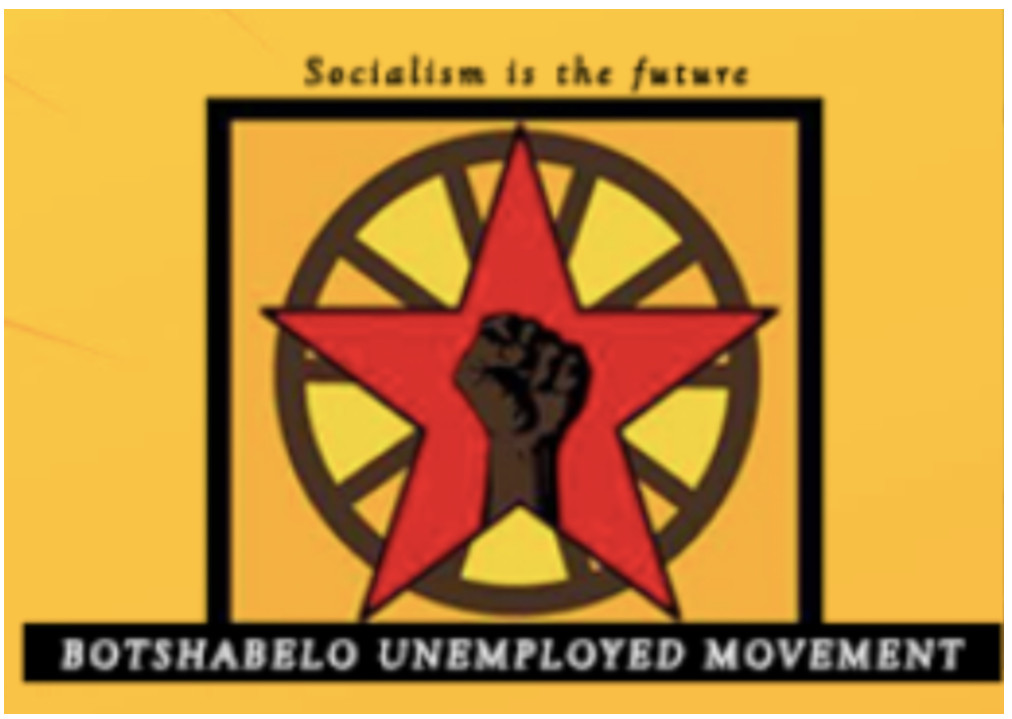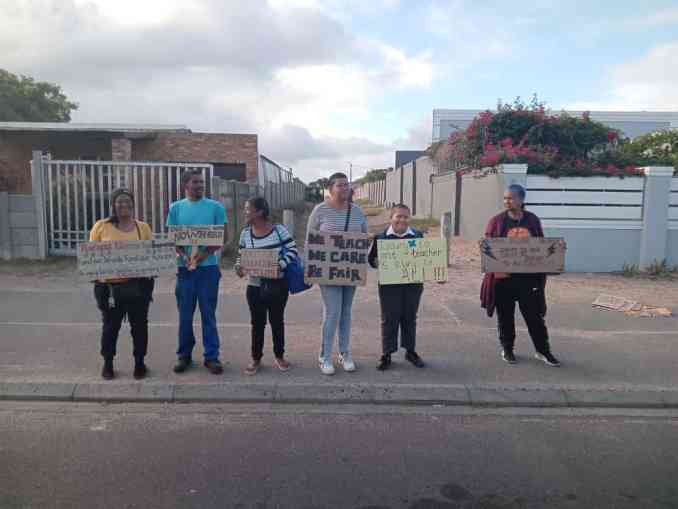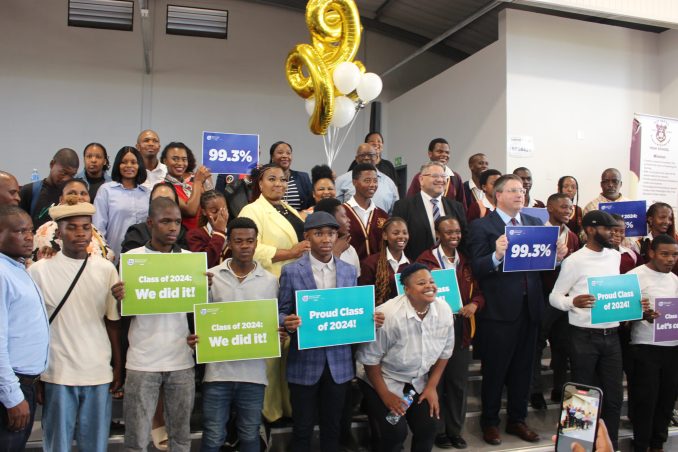The South African Federation of Trade Unions is dismayed that Johannesburg Water has instituted throttling of the water supply for its residents between 21:00 and 04:00. The city indicated that this new measure, which follows the level 1 restrictions implemented in September of this year, will remain in effect until the system recovers. For months, the residents of Gauteng have faced water outages, intermittent water supply, and restrictions on household water use. The province is in the middle of a generalised water crisis, and its major metros –Johannesburg, Tshwane, and Ekurhuleni—are confronted with serious strain.
In a press briefing to update Johannesburg residents about the city’s plans to address the water crisis, the minister of Water and Sanitation, Pemmy Majodina, blamed increased demand due to the growing population and the warm weather as summer approaches. However, the minister’s claims are demonstrably false.
NEOLIBERALISM AND THE COMMODIFICATION OF WATER
The current water crisis ravaging the Gauteng province originated with commodifying essential services. With the rise of the South African version of neoliberalism, inaugurated with ANC’s adoption of GEAR in 1996, basic services like water and energy came to be seen as sites for profit making. While formerly basic services were provided by the state through grants and subsidies to local governments, the new neoliberal order demanded that the end user pay. Thus, with World Bank tutelage, the ANC-led government adopted the cost recovery, user-pay model as the basis for the provision of water.
The argument for commodifying essential services rests on a neoliberal worldview. Neoliberals argue that the private sector is inherently efficient – that is, it provides good quality goods and services to the public at affordable prices. In contrast, neoliberal ideologues see the state and SOEs as sites of corruption, inefficiency, lack of accountability and the provision of poor goods and services at uncompetitive prices. Their solution is to bring in private sector competition, through which it is believed that the public will access good quality goods and services at affordable prices.
However, since the private sector can only provide these services at a profit, it must be enticed to enter the market. This is attained, among other means, by eliminating investment risk from the private sector onto the state. This elimination takes two forms: the investment side and the demand side. First, the state pledges to carry risk if the investment fails; second, it ensures a guaranteed captive market for the private sector to forecast its profitability and thus invest.
NEOLIBERALISM AND BUDGET CUTS
In the neoliberal talk, the second pillar of the World Bank-inspired cost recovery model is sound government finance. The government must strive for balanced budgets, and the fiscus be unburdened from social spending. Thus, the end users must pay for social services instead of services accessed through state subsidies and grants, as before the neoliberal order.
The cost recovery and user-pay model have meant that infrastructure upgrades and maintenance depend on the revenue municipalities collect from the end users. However, since the overwhelming majority of the people in the urban centres who rely on these services are primarily poor and, therefore, unable to pay, municipalities cannot generate sufficient revenue to run infrastructure efficiently. In 2023, Johannesburg Water released a report entitled No Drop. It pointed out that 26% of the water treated for municipal use is lost to leaks and pipe bursts. Further, the report revealed that the city’s per capita water consumption of 279 litres per day is higher than the international average of 173 litres. The report attributed this relatively high per capita consumption rate to physical losses of municipal distribution systems, which is poor maintenance and operation of infrastructure.
As recently as October 2024, Johannesburg Water revealed that 47 of its reservoir fleet, which constitutes half of its total fleet, is leaking. The utility has only the budget to repair 20 of the reservoirs. Johannesburg Water has only budgeted to fix 778km of the city’s 12000 km of water pipes.
NEOLIBERALISM AND PRIVATIZATION OF WATER PROVISION
The current water crisis has its roots in the Masakane( Let’s build it together), a marketing and communication campaign initiated in the early 2000s to get the public to accept the user pay model. The public had to consent that essential services like water and electricity would be provided at cost to the end user. Put differently, the public had to accept that entities tasked with delivering critical services had to be run like businesses. These “consensus building” meetings aligned with the Masakane campaign were conducted with a World Bank paper as a guide. The paper sought to inculcate into the public consciousness that privatised water management and provision were among the numerous ‘structural reforms’ necessary for creating a conducive environment for investment, economic growth, jobs, and prosperity. In its 2000 Sourcebook on Community-Driven Development in the Africa Region, the World Bank clarified that some political leaders still needed to be persuaded to “move away from the concept of free water for all.”
This culminated in establishing Johannesburg Water Company Limited – a separate entity from Johannesburg Water, which is wholly owned by the City of Johannesburg – whose ownership structure is 97.5% by the City of Johannesburg and 2.5% by the French company Suez—through 25-year concession agreement between the City of Johannesburg and Johannesburg Water Company Limited, Suez company immediately struck a lucrative contract to service 600 000 households in the City of Johannesburg in 2001. Following this arrangement, the national government began granting and subsidising the local government, thereby compelling the latter to rely almost entirely on self-generated revenue to fund the provision of water and other essential services. The result was that local governments had to severely reduce their services to primarily poor communities. Consistent with logic and the imperative of cost recovery, local governments implemented water meters and began cutting off non-paying residents. This also resulted in the corporatisation of management and delivery of water and other basic services, leading to increased prices and the privileging of those who could afford to pay.
Operation Vulindlela, touted by the National Treasury as the panacea of South Africa’s growth problems, is bent on intensifying this programme. The strategy aims to entice the private sector to provide water services through public-public partnerships(PPP), copied and pasted from the World Bank’s hymn book. PPPs are premised on a model that seeks to “crowd in” the private sector and thereby leverage its supposed efficiency, transparency, accountability and inherent ability to bring prices down. Operation Vilindlela’s objectives include “investing in and sustaining better-quality infrastructure and services and attracting private sector investment into the water and wastewater sectors.” To support this second objective, DWS established the Water Partnerships Office (WPO) through an agreement with the DBSA to facilitate private investment in water infrastructure.In March 2024, The Water Partnership Office( WPO), established by the Department of Water and Sanitation(DWS) to facilitate PPPs in water provision, in line with Operation Vulindlela, gave a presentation to SALGA, DWS and the Development Bank of Southern Africa. In it, the WPO clarified that “Private sector investment in public infrastructure is feasible where there is a sustainable revenue stream associated with the investment so that the private sector can get a reasonable return on its investment – the project must be bankable. There must be a focus on projects with sufficiently large and sustainable revenue streams – the larger the revenue stream about the investment and the more sustainable the revenue stream, the greater the likelihood that the project will be bankable.”So, the working class will be presented as a captive market to private capital owners. The water they need to survive is to be made ‘bankable’ and thus a lucrative commodity for private capital.
CONSEQUENCES FOR THE WORKING CLASS
Coupled with the throttling of water supply, the City of Johannesburg and Johannesburg Water have committed to embarking on cutting off informal, illegal connections in informal settlements and improving billing methods and revenue collection. From this commitment by the City of Johannesburg it only takes a little to realise that poor working class communities are due bear the brunt of the attempts to resolve the water crisis. Just like in the 2000s when nearly 100 000 people experienced water cut off monthly, a stand-off between working-class communities and the City’s authorities is the offing. And just as in the 2000s when due to cut-offs there was a cholera outbreak as cut off working class communities could not access clean drinking water, the City’s plan to aggressively embark on cut-off may see another outbreak of cholera, as it has already happened in Hammanskraal in the recent period. Water provision as a site of profit-making is intensified in the context of catastrophic levels of unemployment, grinding poverty and an ever-increasing migration into urban centres and informal.






